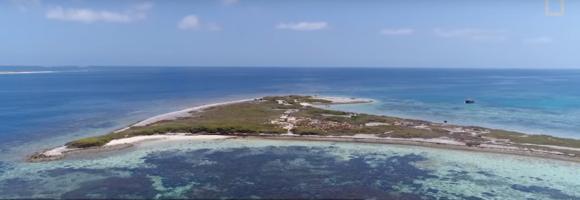
Beacon Island, also known as Murder Island
The story of the Dutch East Indiaman Batavia is as grim and tragic as it is fascinating. The Batavia was wrecked on her maiden voyage in 1629 when she ran aground on Beacon Island off Western Australia. Of the original 341 passengers and crew, 282 survived the shipwreck. Around 115 people subsequently died, many murdered by mutineers. Only 68 made it to the ship’s namesake port of Batavia. Not surprisingly, Beacon Island has come to be known as “Batavia’s Graveyard” and “Murder Island.”
Recently, archaeologists have located five additional bodies on the island. Based on the care evident in the burial of the bodies, the scientists believe that these individuals died prior to the outbreak of the mutiny. The bodies, interred neatly in a row, showed no signs of violence, likely died soon after the wreck.
Jeremy Green, the Head of Maritime Archaeology at the Western Australia Museum, has been investigating the Batavia and the story of its survivors since the wreck’s discovery more than 50 years ago. He led the excavation of the wreck site in the 1970s.
“This latest find adds significantly to the wealth of information we have on Batavia, and shows that there are still very important discoveries to be made about the remarkable human story behind one of Australia’s oldest known shipwrecks,” he said.
The Batavia sailed from Texel on 27 October 1628 under the command of Francisco Pelsaert, bound for the settlement of Batavia, now known as Jakarta, to trade for spices. During the voyage, the ship’s sailing master, Ariaen Jacobsz, and a merchant, Jeronimus Cornelisz, began to plot a mutiny to take over the ship and steal the trade goods she carried. They recruited a number of crew members to support them.
Before the mutiny took place, the Batavia ran hard aground and broke apart on Beacon Island. 40 people drowned in the wreck. Pelsaert, Jacobsz, and a few senior officers and crew set off in a longboat in search of water. When they failed to find any on nearby islands, they sailed for help in Batavia.
Cornelisz was left in command of the survivors. He commandeered all weapons and food supplies. Backed up by his band of would-be mutineers, Cornelisz oversaw a reign of terror in which anyone thought to get in his way was murdered. By the time that help arrived two months later, the mutineers had killed an estimated 115 men, women and children.
